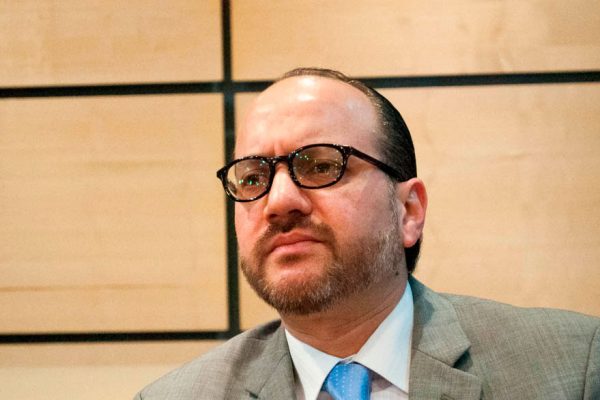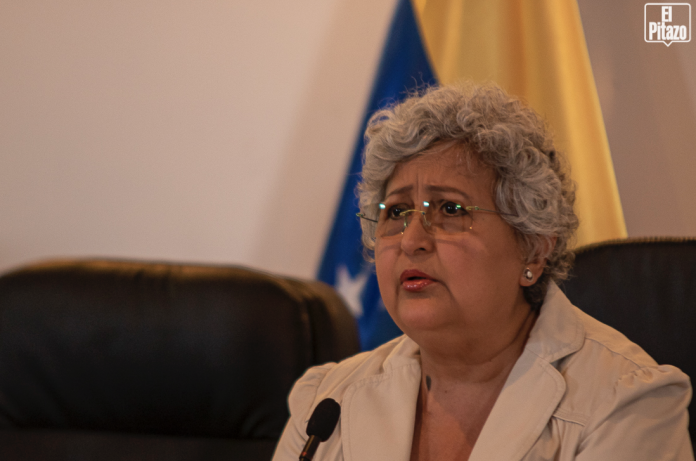On the first anniversary of the Taller Internacional sobre Reforma Policial (International Workshop on Police Reform), organized by the Friedrich Ebert Foundation, held in Mexico City, we created the original analysis on the subject entitled “¿Qué pasó con la reforma policial en Venezuela? Preguntas y respuestas básicas sobre el proceso en su etapa púber” (What happened to police reform in Venezuela? Questions and basic answers about the process in its early stages).
In that essay we answer six basic questions about police reform, and this piece we will concentrate on the first two:
How do you evaluate the police reform processes that have been carried out in your country?
Without a doubt the impact of the process carried out by the Comisión Nacional para la Reforma Policial, CONAREPOL, (National Commission for Police Reform) in terms of designing public policies, with a methodology based on consultation, research, as well as the normative products that derived from them are positive. In terms of the task, the impact is positive because you have a good police model.
On the level of reality, of being, of construction of institutionality and of people’s daily lives, this ideal model has not been implemented and what de facto political power has done, in parallel, is a counter-reform, that is, doing the opposite of what is advocated for in the model. This has clearly negative consequences.
What have been the main results?
The first and most important, from what the designed police model has already mentioned, a police that has, as an objective, respect of human rights, and civil and professional character. Not only is it a model of what police should be, rather that, further, establishes a precedent in the form of elaboration of public policy in this matter, based on research and prior consultation, which starts with informed decision making.
Some institutional spaces were designed, that previously did not exist in a way that was useful for the implementation of this model: a) the idea of a Governing Body in police matters; b) An advisory body in charge of designing and planning police policies; c) Deputy ministries specializing in these areas; d) A university also specializing in this area in which a large investment was made, especially in infrastructure.
Another result that should be analyzed is the police hypertrophy, this is the name of the accelerated and excessive growth of this institution. Any process of massification in the provision of a service must have a rational pace, which must be evaluated technically and continuously to ensure quality and prevent the alleged remedy from being worse than the disease. Since 2006, starting with the process carried out by CONAREPOL, the number of preventive police (in the 3 political-territorial levels) has increased considerably.
Above average
The international standards of the rate of police formation suggest an average of between 300 and 400 officials per hundred thousand inhabitants, and since 2006 Venezuela has been well above this average: 429 police officers per hundred thousand inhabitants (Antillano y Centro para la Paz y los Derechos Humanos de la UCV [Antillano and the Center for Peace and Human Rights of UCV], 2007; Antillano, 2014)

Thus, it went from a total of 114,463 police officers in 2006 (Sanjuan, 2012) to more than 140,000 by mid-2015 (Bernal, 2015). This means that the base of the police force had an approximate growth of 22.3% in that period, increasing the rate of police 28 points more, to reach 457 police officers per one hundred thousand inhabitants, 107 points above the international standard. In 2006 there were 123 state and municipal uniformed police, by 2015 that number had risen to 147 (an increase of 19%).
The case of the Bolivarian National Police is emblematic; within just six years of its creation it reached an approximate number of 14,739 officers. To reach these figures, minimum standards of selection and training are not met. Subsequently, it is difficult to have an efficient supervision and control of those thousands of young armed men, who are taken to the streets after an insufficient period of training.

This may offer insight toward evaluations of the efficiency of the police in Venezuela. The current homicide rates and the increasing number of deaths at the hands of the State security forces have been some of the possible consequences of this abrupt increase in the number of police officers in the country.
A regulatory block that does not apply
Finally, taking into account the regulatory block that includes the model, made up of the Ley Orgánica del Servicio de Policía y Cuerpo de Policía Nacional Bolivariana, LOSPCPNB, (Organic Law of the Police Service and the Bolivarian National Police Force) (the base law), the Ley del Estatuto de la Función Policial (Law of the Statute of the Police Function) (from 2009), as well as the different sublegal norms comprised of some 34 resolutions and 25 procedural manuals. However, as has already been said, these are not implemented, and actually produces negative concrete results, because what exists de facto is a counter-reform. It is not a legislative problem, it is mainly a political and institutional problem, and – in a subsidiary way – administrative. The new model embodied in the LOSPCPNB was not implemented, as regards the institutionalization of practices, administration, monitoring, as well as the adequate application of protocols and procedures.
This counter-reform, paradoxically, is hidden behind the new model and this regulatory block that does not apply. Both serve to be exhibited at times of crisis of the police, they disguise and legitimize politically, socially and in the media. It’s merely declarative use invisibilizes routine police practices that end up becoming even more dangerous and harmful.
In terms of Merton’s sociology, it could be said that CONAREPOL and the entire police reform process initiated in 2006 fulfilled a manifest function of designing a new police model, dignifying the service, making it consistent with the protection of human rights and progressive discourse. Its latent functions are several, the most important was to conceal what was happening in reality and boost the police apparatus and really deepen the military and authoritarian logic.
More questions
In future installments we will answer other questions about the Venezuelan police reform process. If you want to read the full report that serves as the basis for this article, you can find it at this link: View article here.
Researcher of the Institute of Criminal Sciences, Professor of Criminology in pre and postgraduate of the Central University of Venezuela




